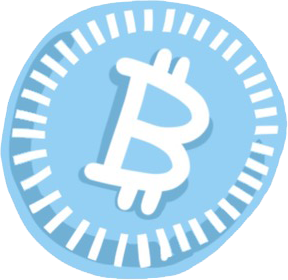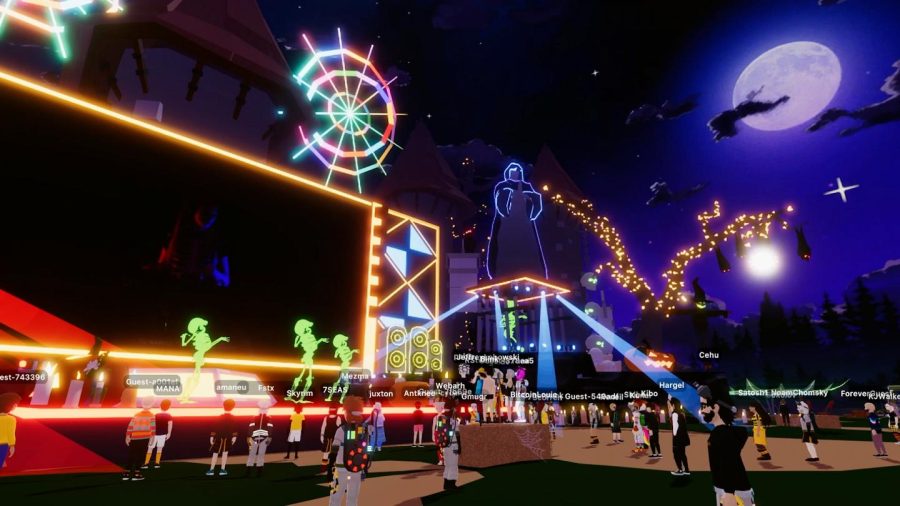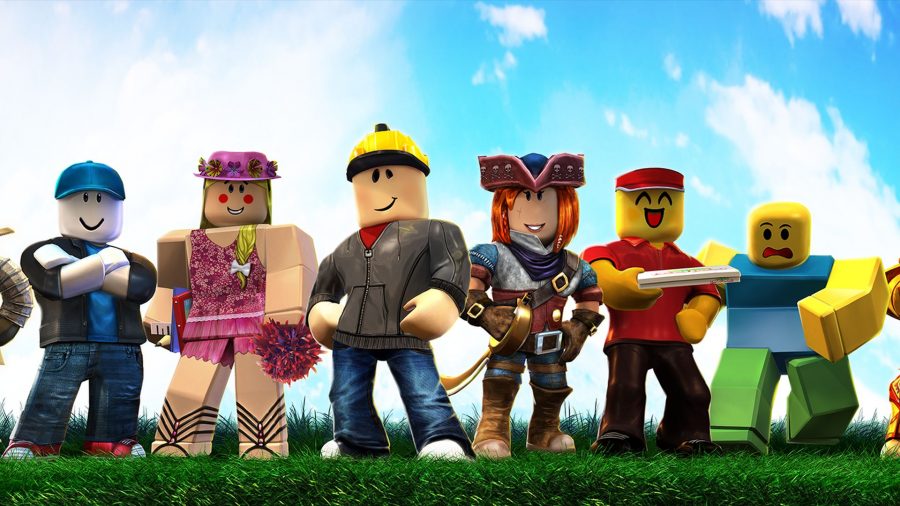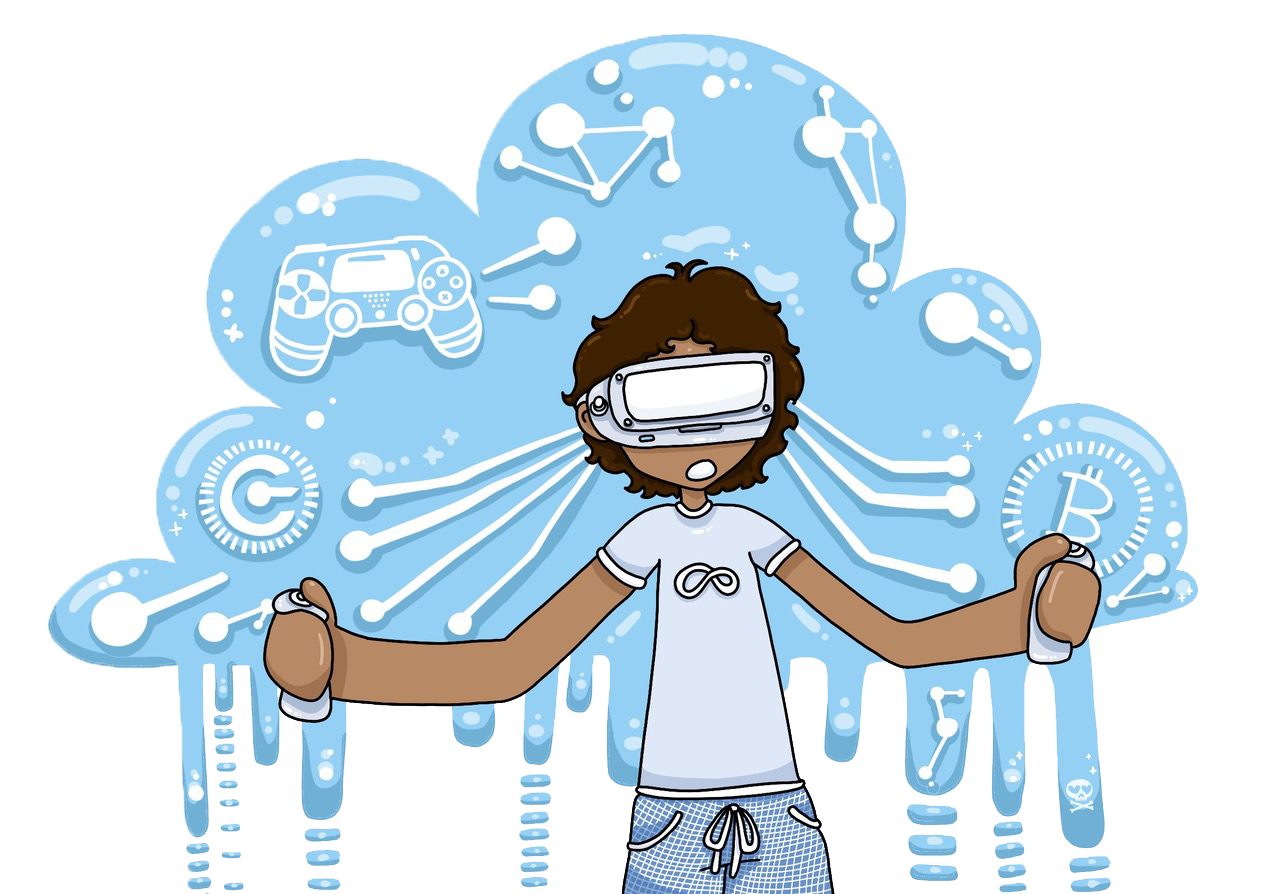Into the metaverse: How it will impact your life
March 9, 2022
With Facebook changing its name to Meta, Microsoft announcing massive mergers in the VR gaming space and teenagers making millions of dollars developing virtual land, the metaverse is the newest buzzword taking over the tech space. The potential applications in business, gaming, education and investing excite many. But, will this idea remain a silicon valley fever dream, or is it the future of the internet?
Decoding the metaverse: Key questions answered
The metaverse is a decentralized network of immersive 3D platforms that provide the possibility of living another life, entirely online. Instead of the internet, which allows users to access computers, the metaverse places users directly in them. This allows users to “live” essentially any experience through avatars, or virtual representations of people. Like the internet, the metaverse does not consist only of a single service or company. Rather, the term describes the totality of experiences and services in virtual or augmented reality.
Why would people want the metaverse to exist?
The metaverse has a multitude of uses. Microsoft invested heavily in the gaming industry, most recently through its $68.7 billion acquisition of Activision Blizzard. The metaverse will revolutionize video games as they become more immersive, realistic and fun to play. The company is focusing on making working from home a more viable option for everyone. Microsoft’s vision for the metaverse includes office spaces, schools and productivity-related software, all in virtual reality. Bill Gates even claimed that most business meetings would occur through the metaverse in two to three years. The metaverse could also be a gateway for people to gain new, previously inaccessible experiences like traveling the world, attending digital festivals, socializing with new people, reliving historical events among other interesting applications. The latter is what Meta (formerly Facebook) is focused on developing. Another reason some people are rooting for the metaverse is the opportunity for money to be made with virtual land sales for millions of dollars, cryptocurrency investment, stocks for metaverse companies and more.
Why do companies want the metaverse to exist?
Because the metaverse is completely immersive, companies involved in its development will be able to harvest data on every aspect of your life, from business to entertainment. This also includes data on your physical movements as virtual reality headsets will come with hand (and eventually foot) trackers to register real-world movements. This data can be useful for companies and governments, primarily hyper-targeted marketing. The all-encompassing access that companies and governments will have into personal lives triggers privacy and security concerns in some experts and consumers.
Does the metaverse exist today?
Not exactly. Although softwares like Zoom may seem like an example of the metaverse, that’s not quite it. By definition, the metaverse must be immersive and 3D. Gaming is where the metaverse is most developed. Major companies have been pouring money into developing VR gaming as consumer graphics chips become more powerful and VR technology improves. Games like Roblox already have VR modes, social opportunity and robust in-game economies. At the same time, companies like Decentraland are offering their early versions of the metaverse, albeit quite rudimentary and often pointless. The hope for metaverse enthusiasts is for each of these pieces — communication, gaming, work, money-making — to develop sufficiently in VR to fit together and create a network.
Who owns the metaverse?
By definition, no one company can own the metaverse just like no one can own the internet. Massive companies like Google control large swaths of total traffic, and the same may become true for the metaverse. These companies may use their control and money to exercise great influence over the metaverse.
Is the metaverse inevitable?
The metaverse is in its early stages of development, meaning that there’s still a lot of uncertainty. Questions over privacy, security, feasibility, climate change and consumer demand means that widespread use of the metaverse is far from reality. Still, technology companies are pouring billions of dollars into overcoming these challenges, making it a serious possibility.
Where did the metaverse come from?
Scan the QR code below with your phone camera to see a timeline of the metaverse in augmented reality. AR creation by Amon Gray.

What technologies power the metaverse?
Graphical processing unit: A computer chip that renders graphics for display on an electronic device. GPUs act as a sort of engine to present graphical content on computer or VR screens. All metaverses will rely on GPUs.
Blockchain: The blockchain provides a decentralized solution to verifying ownership of digital assets. The metaverse will require use of the blockchain for all transactions.
Cryptocurrency: A digital currency that is not backed by a centralized authority, such as a government or central bank. Cryptocurrencies will become essential to buy basic digital goods and services in the metaverse.
Artificial intelligence: With all the new data that companies will have access to, AI will become more predictive than ever. With data on physical movements, virtual AI people in the metaverse could quickly become indistinguishable from human users.
3D reconstruction: 3D reconstruction technology, developed by companies like Google and Matterport, allows users to scan real-world environments into digital ones. Using this technology, houses, stadiums and even cities will be realistically transformed into virtual space.
Augmented vs. virtual reality: Augmented reality places digital objects into the real world using a lens, like a phone camera. Virtual reality is an immersive experience that transports the user into a digital world. Although AR is considered a part of the metaverse, only VR technology can facilitate the creation of realistic, immersive environments.
Internet of things: The IoT is a network of physical objects that connect to the internet. “Smart” products — speakers, thermostats, TVs, phones — are all examples of the IoT.
Metaverse investments lead to big gains, bigger losses
The world of internet money-making is a bizarre place full of lives ruined and fortunes made overnight. The chance, however small, for massive reward often entices people, particularly those without financial education, to invest large amounts of their money into the next big thing. Currently that opportunity is the metaverse. However enticing, it is currently too early, too risky and dubiously legal for high schoolers to be investing in the metaverse.

Investment opportunities on the cutting edge of internet technology are often characterized by a lack of understanding from investors about exactly what the product is, and the metaverse is no different. Lack of information about the technology has driven investment but also apprehension about potential returns.
Some tangible ways exist to invest in the metaverse. Companies making processors, like AMD and Qualcomm, have products that would be necessary for the functioning of the metaverse. Therefore, these companies have the potential to see stock share price increases if the development of the metaverse continues.
Microsoft, Meta and even Roblox have made commitments, both verbal and monetary, to create a footprint in the metaverse. Meta has already invested $10 billion in metaverse-related development, and Microsoft purchased Blizzard for $68.7 billion, which they believe will “provide building blocks for the metaverse.” These companies’ involvement in the metaverse space could improve their performance if it does well in the next few years.
A variety of less established projects have also cropped up in the space, such as Decentraland and The Sandbox. Both of these projects allow users to buy virtual plots of land, which are secured as NFTs on blockchain. These investments are much less known than more conventional investment methods, so it’s hard to know how they’ll do.
While the majority of digital investments remain in this state, financial educator Rebecca Maxcy, the director of the UChicago Financial Education Initiative, cautions people to think before they invest.
Ms. Maxcy recommends that the average person be a passive investor with a diverse portfolio. She cautions against purchasing single stocks and believes the same holds true for digital investments.
There are also concerns about the involvement of young people in many of these digital investments.
Ms. Maxcy said, “I don’t think kids should be investing like this. If they want to do it, it should be coupled with financial education. I feel like there’s this gamification of investing right now, and it’s doing more harm than good.”
As it stands, investing in the metaverse is not a good idea for high schoolers, there are better financial opportunities for the U-High students interested in investing.
Early metaverses offer variety of features, uses
Here are four virtual worlds in this rapidly expanding space

Decentraland, which launched in 2020, is a VR marketplace for online assets based on the Ethereum blockchain. It’s similar to a large-scale public multiplayer game server, where everything, down to the land and avatars, is an NFT.
Unlike other virtual worlds, Decentraland is meant to be fully decentralized and democratic: prices, content and policy are all driven by user votes. The closest thing Decentraland has to human leadership is the Security Advisory Board, composed of elected officials who mostly handle bugs. Users can purchase materials to build on plots of land using an in-world currency called MANA. The virtual real estate itself is represented by a currency uncreatively named LAND. The whole world is laid out in a chunky, low-polygon (or low-poly) style, which players can explore freely using similarly styled avatars.
Possibilities for creations range from art galleries displaying NFTs to interactable theme parks and even digital art installments. Players can build and explore however they like, but much of that freedom comes at a cost. Like other virtual worlds, Decentraland isn’t much of a game but an interactive opportunity to make money. However, the possibilities for virtual sales and creation led by the wants of players make it worth keeping an eye on.

My Neighbor Alice, while also based on the blockchain, looks more like your typical farming simulator. For those familiar with the genre, think of it as if “Stardew Valley” and “Animal Crossing” had a baby, and that game was meant to finally explain to everyone what NFTs are. For those who haven’t poured hundreds of hours into developing cutesy virtual lands, imagine a game in which the player pretends to own a farm and the land around it, but has to fund all that land with real money. But at least the animals are cute!
The concept is similar to Decentraland’s virtual marketplace but in a package that allows players to enjoy the game without knowing too much about the financial side of it. Users own land, or islands, which they decorate using items bought through My Neighbor Alice. In-game currency is known as ALICE token. Interestingly, in-game items can be purchased on external NFT marketplaces. The game’s FAQ promisees in-game community events and a reputation system that rewards frequent users.
The game isn’t VR, and is set to be released this year, where it could act as a gateway for those wanting to start their journey of making money through cryptocurrency.

Meta’s Horizon Worlds is perhaps the best-known corner of the metaverse, but that corner has a high entry fee. Users need to get their hands on Meta’s Oculus Quest 2 VR headset before entering Horizon Worlds, which can cost them anywhere from $300 to $400. Despite this large barrier, Horizon Worlds recently gained its 300,000th user.
The virtual world differs in that its main purpose is to facilitate social interactions, and as of now there is no way for users to profit from it. Users sign up with their Facebook accounts and appear in a virtual space as a (rather unsettling) legless avatar. There, users can attend various social events and even code items into the game using a custom visual coding language. Relatively low usership has allowed Meta to station real, human employees in entry spaces to Horizon Worlds to orient new users.
Horizon Worlds is largely focused on communal creation over financial gain. While this allows for more users who aren’t interested in pouring money into digital assets, it still requires them to pay a large sum for a VR headset.

Roblox, a virtual world popular among younger teens, allows budding game developers to create, publish and profit from their games. The site launched in 2006, and has gained over 43.2 million daily users since, making it easily the oldest and most successful world on this list. Most users spend their time hopping from game to game, interacting with other users and spending a virtual currency called Robux, which can be bought with real money. Roblox is free to download and use, but users need Robux to buy special items, private servers and avatars. Popular Roblox games include the pet-raising simulator “Adopt Me!”, the modern-day cops and robbers game “Jailbreak” and the supernatural high school simulator “Royale High.” While the site might raise concerns among parents over internet safety, Roblox offers various optional security features like chat filters and parental controls. Roblox is accessible for both VR and non-VR users.
Metaverses should remain decentralized
Imagine a world where you can chat together with friends on a tropical beach, party in the Palace of Versailles, fly or fight dragons. Envision companies holding board meetings on the moon with people from across the world, or the ability for engineers, artists and architects to conjure up hundreds of different prototypes from nothing. This is just a small sampling of what the metaverse might be.

Such an environment can only be achieved if the revolution is pioneered by a wide array of contributors, not just a small group of tech giants, to allow for a wide range of competition and customer choice, and, just as importantly, alleviate some of the health and privacy concerns the metaverse comes with.
Compared to many technological revolutions of the past, the metaverse is a unique technological development: its primary component is social interaction. Social media platforms like Facebook, YouTube and Twitter routinely increase engagement at the expense of mental health. The only reason these companies are still around despite scandal after scandal is that they have a complete monopoly over online social interaction, with over 70% of social media usership dedicated to the largest five companies. This leaves disgruntled users with little other choice than to continue using these platforms.
If this anti-competitive trend continues into the metaverse, tech companies would have no reason not to use manipulative algorithms in the digital world — cashing in people’s happiness for money, promoting distrust and disinterest in the platform that would lead to a decrease in consumers, which in turn would lead to dwindling advancements in the platform. One of the key factors in the early internet’s success was that its diversity and breakneck competition led to widespread innovation — without a similar trend being nurtured in the metaverse, it’s likely to be nothing more than a passing trend.
Large tech companies have been trying for years to consolidate the gaming industry, something which is now positioned to be a fundamental part of the metaverse. The vast majority of non-gaming companies, with Microsoft’s Xbox being a notable exception, have failed to branch out into the gaming scene. With Microsoft purchasing game companies left and right, and Meta’s version of the metaverse being extremely lacking in any entertainment aspect, the metaverse currently has a grim, impersonal future.
Without any of the high-octane attractions which science fiction often fantasizes about, like the hyper-realistic video games of “Ready Player One” or the worldwide simulation puzzles in “The Three Body Problem,” the metaverse is nothing but a glorified version of VRchat. If the entire metaverse is one company, people won’t be able to get the tailor-made experience they can access today through the standard internet. Even if virtual reality isn’t for everyone, it’s naïve to think that people will experience the metaverse in one homogeneous, standardized way.
The solution to the problems of manipulation, mismanagement and general lack of variety in the metaverse is simple — similar to the internet, if the metaverse remains decentralized, an array of companies will be able to compete or collaborate for the best user experience.
